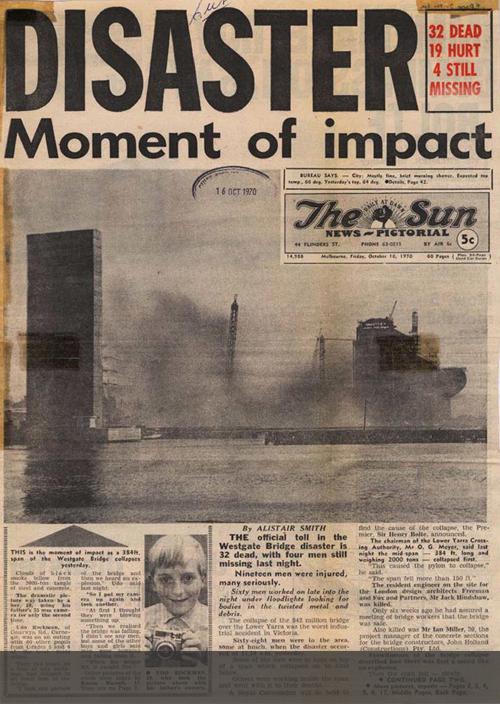At about 11:00 am, Ward tried to contact Hindshaw, telling him that things were not going according to plan and that he should come over to the west side as soon as possible. In fact, Peter Crossley, B.A, M.I.C.E, Site Engineer, Freeman Fox and Partners, took Ward’s telephone call and went out to find Hindshaw. The rebolting was going well and the buckle had come out sufficiently to render it possible to make the bolted connection between the transverse diaphragm in box 4 and the inner upper flange plate. To do this, however, the diagonal brace had to be removed, because its plastically yielded end palm plates would have otherwise prevented the pulling down of the top plating.
Hindshaw arrived on the West span accompanied by Crossley. Hindshaw rapidly assessed the situation, which superficially did not appear to be deteriorating. He was nevertheless gravely concerned with what was clearly a potentially dangerous situation and decided to ask Hardenberg’s advice. Hindshaw telephoned Gerit Hardenberg, M.C.E., Senior Representative of Werkspoor-Utrecht, Wescon and WSC in Melbourne, and gave him a brief outline of the situation asking him to come over. The last thing Hardenberg heard on the phone was as if Hindshaw was thinking out aloud, ‘Shall I get the bods off?’
Almost immediately after that telephone conversation at 11:50 am, span 10-11 collapsed. Among those who died were Hindshaw, Crossley and William Tracy, B.C.E, Section Engineer, JHC, West Side.
Extracts from Report of the Royal Commission into the Failure of West Gate Bridge (1971, Victoria)

